When the Jim Joseph Foundation was founded in 2006, board members and other leaders in Jewish education held a series of meetings to determine a set of “strategic funding priorities.” While the foundation’s generous benefactor, Jim Joseph, z”l, ensured that Jewish education would be the sole focus of grant awards, he did not specify how the Foundation should pursue his vision. Ultimately, the Board identified three funding priorities, one of which is to increase the number and quality of Jewish educators and education leaders. This priority paved the way for the largest bet the Foundation has made to date—the recently completed $45 million, six year investment in Hebrew Union College-Jewish Institute of Religion (HUC-JIR), The Jewish Theological Seminary (JTS), and Yeshiva University (YU), known collectively as the Education Initiative.
As with nearly every major Foundation grant, independent evaluation was built into the grant from the outset. Annually, American Institutes for Research (AIR) provided the Foundation with a comprehensive evaluation of nearly every aspect of the Initiative—number of program enrollees and their experience in the workplace; how the institutions were working together; progress on programs achieving sustainability; and more. Now, with the final evaluation, recently completed, we believe the field has much to learn from the Foundation’s and grant partners’ experience with this investment.
Clear Communications and Supporting Long-Term Capacity
A crucial starting point of this Initiative was conversations with the presidents of each institutions. Getting their early buy-in, clearly outlining expectations, and building trust as grant partners all proved to be key ingredients as the Initiative progressed. With an investment of this scope, length, and ambition, each grantee experienced successes and challenges along the way. A genuine, transparent relationship between the Foundation and each institution helped to overcome the challenges, to allow for course corrections, and to amplify the successes.
The Foundation’s grantmaking practices certainly evolved as the Education Initiative did. As one example, many grantees today often rely on technical assistance for various practices. The Education Initiative demonstrated how crucial this can be. With support from experts in the field, HUC-JIR, JTS, and YU, the grantees made changes in their key marketing and enrollment management practices. The grantees revamped their websites, replaced blanket policies of granting full tuition waivers with systematic processes for allocating financial assistance, and began building robust databases of prospective students. These efforts led to professionalizing key enrollment management functions at the institutional level and to a dramatic increase in the number of inquiries. The work of the Foundation with the grantees ensured that the effects of the grant are long-term and can support an infrastructure for future new programs.
Supporting Change at Multiple Levels
The Education Initiative achieved three levels of measurable impact: institutional, program-level, and individual level. The granteesdid the diligent, tedious, and ongoing work to develop the infrastructure needed to move programs from start-up to sustainability. Out of 20 programs funded by the Initiative, more than 50 percent have been incorporated into core program offerings and will continue. Meeting this “viability” goal was an integral part of ensuring that the investment continues to influence Jewish education long after the grant period concludes.
This desire for long-lasting impact guided the Board’s initial thinking six years ago to make an investment that would support the professional practice of more than a thousand professionals in all kinds of Jewish education settings. Strong educators and leaders are the not-so-secret ingredient for high quality Jewish education programs. The positive effects of the Education Initiative have been confirmed by participants and their employers as well as objective measures such as salary increase and job promotions. Especially noteworthy are the programs that were a result of unprecedented collaboration among the grantees, such as the eLearning Collaborative, a set of professional learning opportunities to faculty members; The Experiential Jewish Education Network, a program for alumni of the three institutions; and The Jewish Early Childhood Education Leadership Institute.
Well-Designed Programs = Deep Influence on Participants
The independent evaluation has uncovered the key mechanisms which take place between program enrollment and post-graduation employment outcomes. Evaluation data showed that HUC-JIR, JTS, and YU have accomplished a lot more than increasing the number of prepared educators. The grantees have demonstrated what well-designed programs look like.
The high program satisfaction of participants in the new programs developed under the Education Initiative is a direct result of a positive and meaningful program experience that exceeded expectations. At enrollment, most participants were interested in programs that aligned with their learning interests and that were offered at convenient schedules and locations. They came with little or no expectations regarding the program experience or their relations with faculty and peers. After program completion, participants reported that the program experience had much more impact than they anticipated. In cohort-based programs, participants have found professional networks that they felt they belonged to; through internships and project-based learning, they have gained professional self-esteem when they saw the results of their new skills; and, through mentoring and advisory, they have sharpened their career aspirations and brought value to their workplace.
In Their Words
A participant in Yeshiva University’s Experiential Jewish Education Certificate Program told AIR researchers: “When I first went into the program I thought this is going to be just a program that puts into words what I have been doing for quite some time. But what I found was, right from the very first session, much more than that. This [program] is about really thinking about the pedagogy of experiential education and tying it to relevant research in the field. And then learning how to create experiences based on serious academic study.”
According to a participants of HUC-JIR’s Executive Master’s Program, she enrolled seeking a degree and found that her overall leadership style and organizational thinking has changed: “I came to the program because of the value of the degree and to have a seat at the table [for decision-making]. But I have gained a lot more than that. Now, I am not able to look at the world the same way I used to. The courses gave me the ability to step back and look at things from a broader scale.”
A doctoral candidate who enrolled in JTS’ Executive Doctoral Program told AIR researchers that a good program is measured not only by its content, but also by the collegial relationships that faculty and students can develop in small Jewish higher education institutions: “I came to the program as an expert in youth engagement and with the intention to focus on the post Bar Mitzvah years. This program helped me come out of the narrow box [of professional focus] and ask different questions. It really broadened my thinking. I had the confidence to explore new questions because I had the access to experts that I did not previously have. I could call a professor and pick his brain whenever I faced a challenge.”
Final Thoughts
Based on these findings and other results summarized in the final evaluation report, it is not surprising that the Education Initiative successfully advanced professionals on the career ladder. Within a very short time interval – up to one year from program completion – one third of the degree program participants and nearly 10 percent of the professional development programs participants advanced to Jewish education leadership positions.
These educators, and those who follow them in Education Initiative programs, will continue to influence Jewish education. Together, HUC-JIR, JTS, and YU, took unprecedented steps—and risks—that have genuinely changed the landscape of the field. The learners who engage in Jewish education, in its variety of settings and through countless experiences, are the ultimate beneficiaries of these advancements.
This blog originally appeared in eJewishPhilanthropy. Yael Kidron is a Principal Researcher at American Institutes for Research. Dawne Bear Novicoff is Assistant Director at the Jim Joseph Foundation. Read the full independent evaluation of the Education Initiative.
 The Jewish Theological Seminary (JTS), Yeshiva University and Hebrew Union College-Jewish Institute of Religion (HUC-JIR) recently completed a six-year, $45 million initiative funded by the Jim Joseph Foundation that increased the number of Jewish educators who earned advanced degrees and credentials from the three schools, provided for new or improved teaching programs, and boosted the number of educators who received jobs or promotions.
The Jewish Theological Seminary (JTS), Yeshiva University and Hebrew Union College-Jewish Institute of Religion (HUC-JIR) recently completed a six-year, $45 million initiative funded by the Jim Joseph Foundation that increased the number of Jewish educators who earned advanced degrees and credentials from the three schools, provided for new or improved teaching programs, and boosted the number of educators who received jobs or promotions.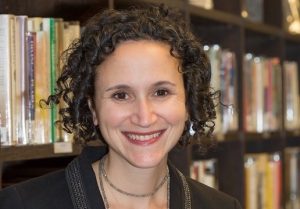
 When the Jim Joseph Foundation was founded in 2006, board members and other leaders in Jewish education held a series of meetings to determine a set of “strategic funding priorities.” While the foundation’s generous benefactor, Jim Joseph, z”l, ensured that Jewish education would be the sole focus of grant awards, he did not specify how the Foundation should pursue his vision. Ultimately, the Board identified three funding priorities, one of which is to increase the number and quality of Jewish educators and education leaders. This priority paved the way for the largest bet the Foundation has made to date – the
When the Jim Joseph Foundation was founded in 2006, board members and other leaders in Jewish education held a series of meetings to determine a set of “strategic funding priorities.” While the foundation’s generous benefactor, Jim Joseph, z”l, ensured that Jewish education would be the sole focus of grant awards, he did not specify how the Foundation should pursue his vision. Ultimately, the Board identified three funding priorities, one of which is to increase the number and quality of Jewish educators and education leaders. This priority paved the way for the largest bet the Foundation has made to date – the  Funder Collaborative is expanding co-investments and shared learnings of Jewish teen initiatives.
Funder Collaborative is expanding co-investments and shared learnings of Jewish teen initiatives.
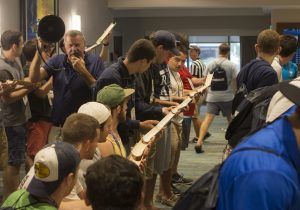 As the only international Jewish fraternity,
As the only international Jewish fraternity,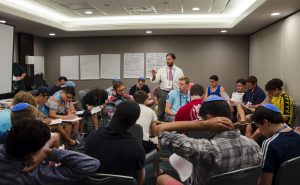 For the Tikkun Olam Track, AEPi staff led a Jewish philanthropy program that had participants run a phonathon/textathon for an hour with a goal of raising $1000 to show the ease in which fundraising can be done at a local level at each chapter). The group exceeded the goal, and the program was immediately praised by many participants, some of whom had never before solicited a gift.
For the Tikkun Olam Track, AEPi staff led a Jewish philanthropy program that had participants run a phonathon/textathon for an hour with a goal of raising $1000 to show the ease in which fundraising can be done at a local level at each chapter). The group exceeded the goal, and the program was immediately praised by many participants, some of whom had never before solicited a gift. Two successful Jewish summer camps have announced plans to open new branches on the West Coast.
Two successful Jewish summer camps have announced plans to open new branches on the West Coast.
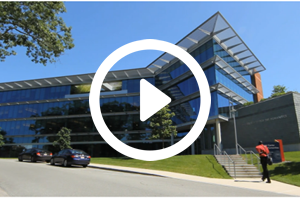
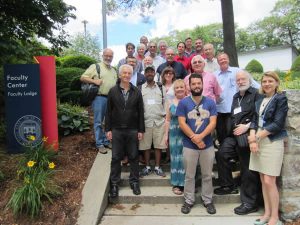
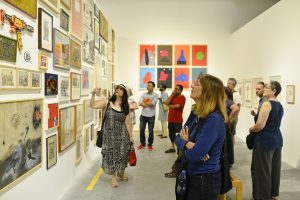
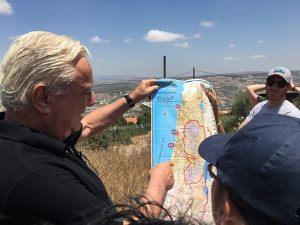
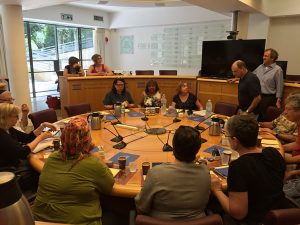
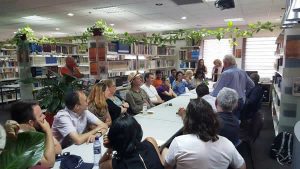
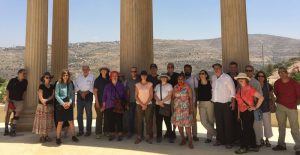
 Yedida Bessemer asked eJP readers
Yedida Bessemer asked eJP readers